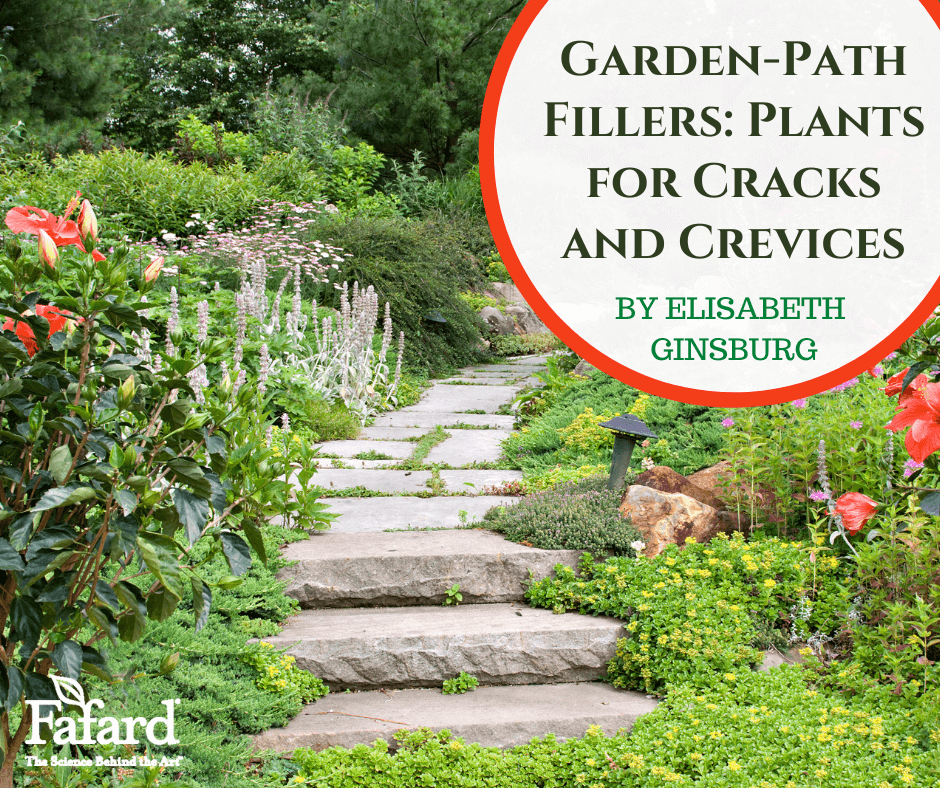
Nature abhors bare ground and will happily (and quickly) cover even the smallest bare spaces with weeds. Keeping those weeds at bay in the cracks and crevices between pavers, stepping stones, or along rock walls can be a perpetual battle.
It doesn’t have to be that way.
There are plenty of tough, beautiful, neat spreading plants that are small enough to fit into cracks and crevices. Some have appealing flowers and more than a few sport fragrant foliage. Leaf textures vary from fern-like to fleshy and succulent.
Depending on the situation, the following plants will beautify those hard-to-fill spaces and end the battle of the crevice weeds.
Soft Greens: Alluring Faux Mosses
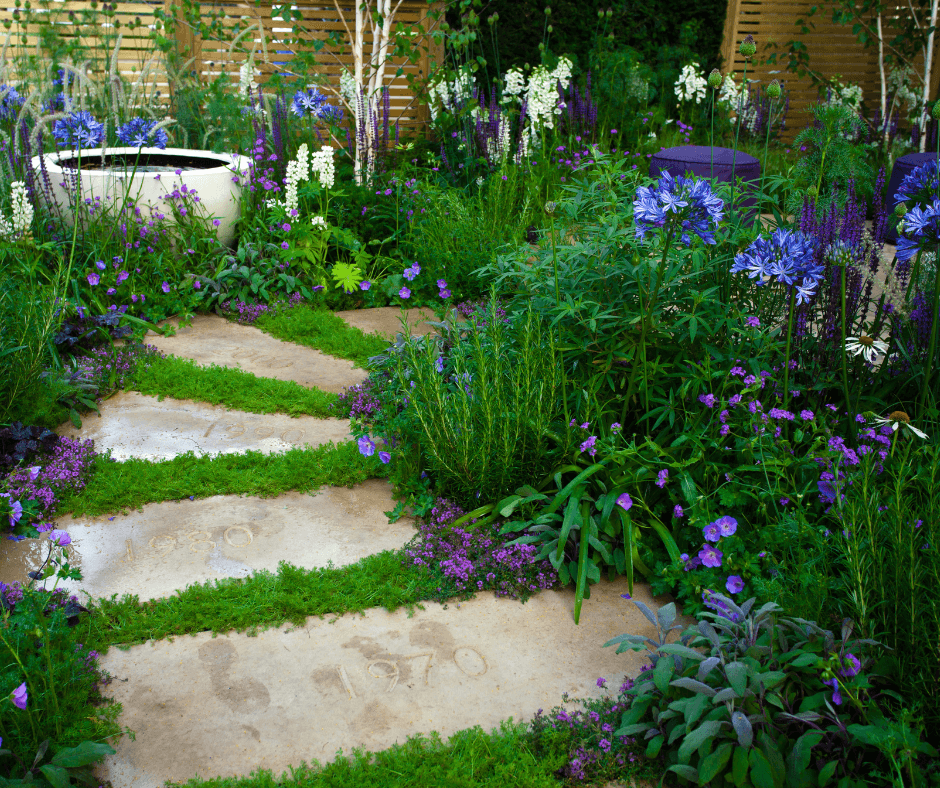
Irish and Scottish mosses (varieties of Sagina subulata and Arenaria verna) are not true mosses at all, but diminutive members of the carnation or Caryophyllaceae family. Thriving in full sun to partial shade, the two moss-like species form mats of thin, creeping stems covered with soft, tiny leaves in green (most often in Irish moss) or golden-green (most often in Scotch moss). In spring, Sagina varieties are adorned with single white flowers, while Arenaria bear their blooms in clusters. Rising to a height of only about one inch tall, the plants tolerate light foot traffic and are generally hardy in USDA Plant Hardiness Zones 4-8.
Thyme for Fragrance

Some avid gardeners make entire lawns of fragrant thyme species and varieties, but the plants are also great crevice fillers. Many will do the job, but all like excellent drainage and full sunshine. Among the most popular are elfin thyme (Thymus serpyllum) and mother-of-thyme (Thymus praecox), which share other nicknames that include creeping thyme, wild thyme, and others. The European natives belong to the mint, or Lamiaceae family and are related to common culinary thyme (Thymus vulgaris) and are equally edible. Growing only about 1/4 inch tall and spreading up to one foot, each plant features scores of tiny, ovoid leaves, with the characteristic thyme fragrance.
The flowers, appearing in June or July, are deep pink in Thymus serpylluum and somewhat lighter in Thymus praecox. Thriving in USDA Zones 4 or 5-8, the perennial plants will attract butterflies and pollinators, but not deer, and will withstand foot traffic. In mild climates, thymes are evergreen.
Creeping Speedwells
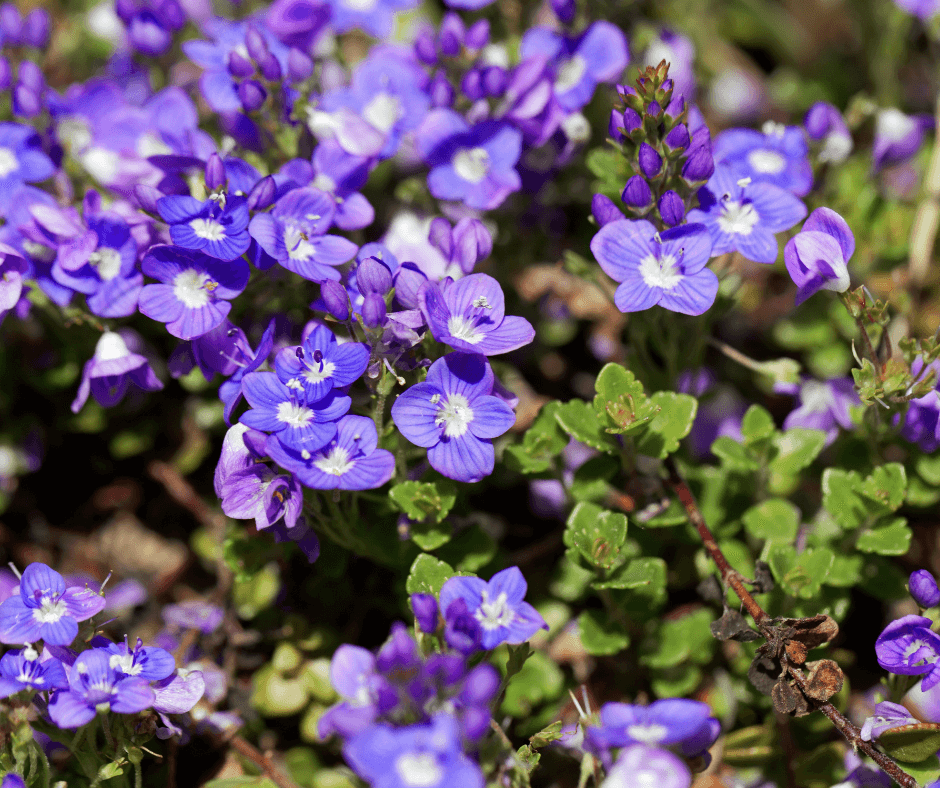
Though not real thyme, thyme-leaf speedwell (Veronica oltensis) shares thyme’s ground-covering nature. The tiny leaves of these snapdragon relatives are evergreen on plants that rise to only 1 inch in height. Thyme-leaf speedwell’s crowning glory is the tiny blue flowers that cover the plants in spring. Blooming and spreading best in full sun and flourishing in zones 4-9, the plants can withstand low water conditions once they are established. Equally drought-tolerant Turkish speedwell (Veronica liwanensis) is another great solution for cracks between bricks or pavers. The characteristically tiny leaves are glossy green and the plants are quick to establish because the stems root as they travel. Periwinkle-blue flowers appear in late spring on plants that grow 1 to 2 inches tall and are hardy in zones 3-9.
For something different and cheerful, little Veronica repens, or creeping veronica, is perfect. The foliage is dense and golden on plants that grow 1 to 2 inches tall. Creeping veronica is evergreen in southern gardens and thrives in zones 4-8.
Steppable Sedums
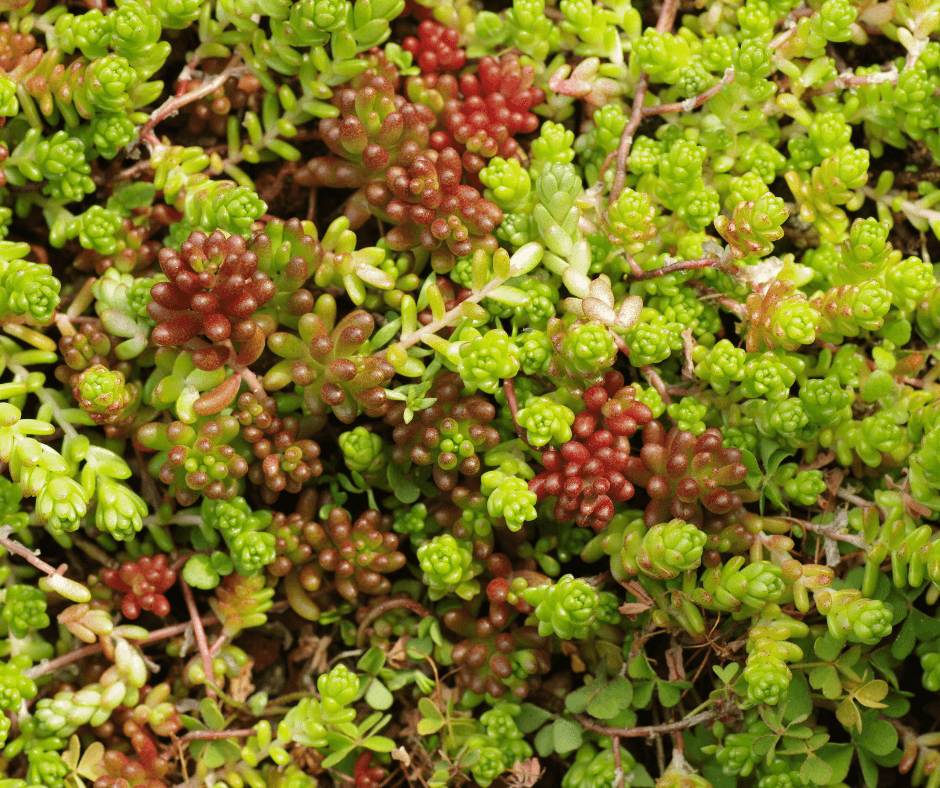
Always in vogue, some succulent sedums also make excellent crevice-fillers. One terrific choice for larger cracks or spaces is Caucasian stonecrop (Sedum spurium), also known as two-row stonecrop, which grows to about 3 inches tall, with a spread of up to 18 inches. Its leaves are deciduous, but dense roots hold soil between cracks through winter. The fleshy leaves of the popular and somewhat less vigorous ‘Tricolor’ variety are green-tinged with pink, turning red later in the season. Tiny pink flowers add interest in late spring to early summer. The evergreen gray sedum (Sedum pachyclados) is similar in size and spread to Caucasian stonecrop, with miniature blue-green “hen and chick” type leaf rosettes that support pink flowers in mid to late summer. These sedums like relatively dry, well-drained soil as well as lots of sunshine and grow best in zones 4-9.
Other Great Creepers
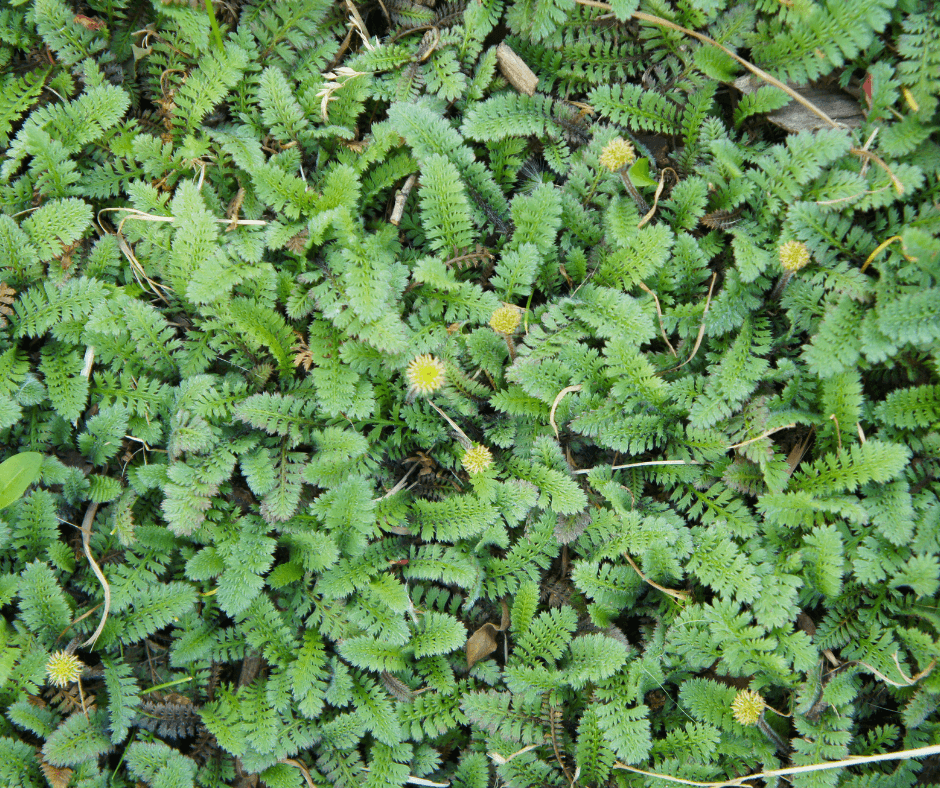
Creeping mazus (Mazus reptans) is another great perennial creeper, native to the Himalayas and hardy in USDA zones 5-8. The narrow green leaves stay vibrant into the fall, but the tubular, blue-purple, and white flowers are what set the two-inch-tall grower apart. With its love of damp soil, creeping mazus is perfect for low or wet cracks or crevices
The fancifully named New Zealand brass buttons (Leptinella squalida) is a creeper that features leaves that look like tiny ferns. The “brass buttons” of the common name refer to the small yellow flowers that bloom in June or July, but the foliage plays the real starring role for this sun-loving species. ‘Platt’s Black’ is a striking variety with near-black leaves. Flourishing in USDA zones 4-10, New Zealand brass buttons spreads readily by underground rhizomes.
Low Maintenance for Low Growers
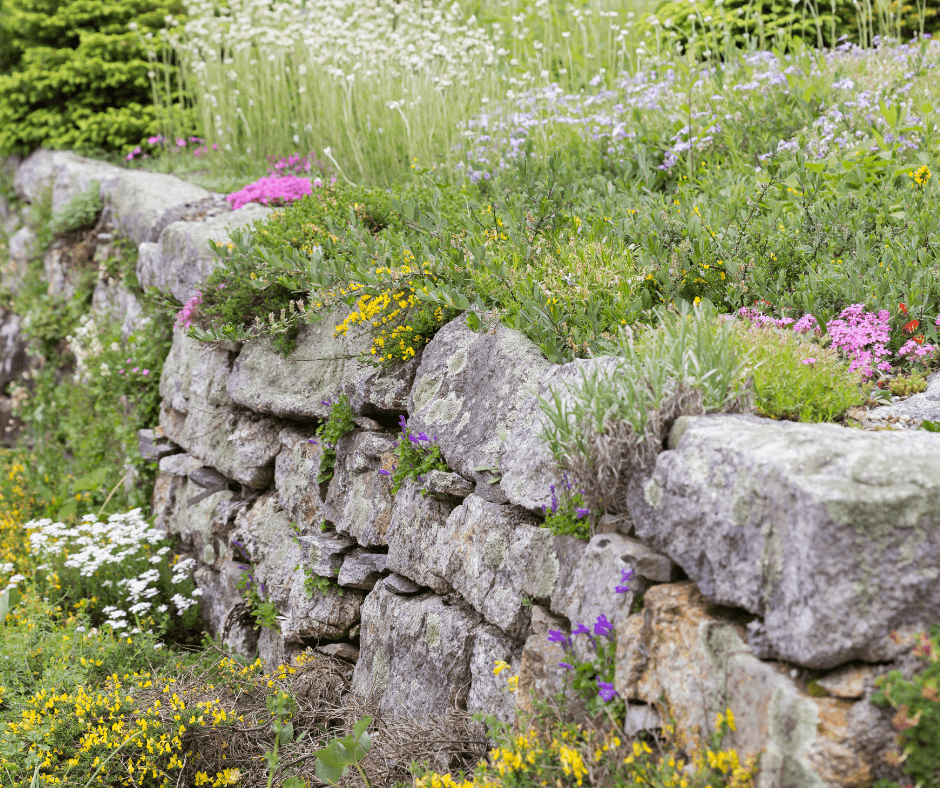
Once creepers and crevice fillers are established, they generally do not take much maintenance. If soil is lacking in the planting spaces, fill in with a quality product like Fafard Premium Topsoil. Water regularly until the plants are established. The best time to sheer back crack and crevice fillers is right after they bloom. At other times, trim to maintain size and shape. parameters.

